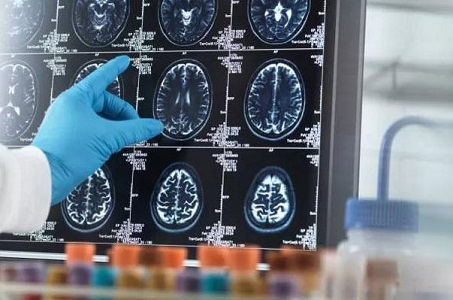Contaminated medical products like growth hormone can lead to early-onset Alzheimer's disease!
Nikhil Prasad Fact checked by:Thailand Medical News Team Aug 27, 2024 7 months, 4 weeks, 2 days, 12 hours, 42 minutes ago
Alzheimer News: A Concerning Discovery
A recent study by researchers from multiple institutions in London, UK, has unveiled a potential connection between the administration of cadaveric pituitary-derived growth hormone (c-hGH) and the onset of Alzheimer's disease (AD) in some patients. The study, which this
Alzheimer News report discusses, highlights the occurrence of iatrogenic (medically induced) Alzheimer's disease in individuals who received this treatment as children. While the findings may suggest a rare and unique form of Alzheimer's, they also emphasize the need for careful consideration of historical medical practices and their long-term effects on health.
 Contaminated medical products like growth hormone can lead to early-onset Alzheimer's disease!
The Study's Background: Cadaveric Growth Hormone and Prion Diseases
Contaminated medical products like growth hormone can lead to early-onset Alzheimer's disease!
The Study's Background: Cadaveric Growth Hormone and Prion Diseases
Between 1959 and 1985, cadaveric pituitary-derived growth hormone (c-hGH) was widely used in the United Kingdom to treat children with growth hormone deficiencies. Unfortunately, this treatment was later found to be contaminated with prions, leading to several cases of iatrogenic Creutzfeldt-Jakob disease (iCJD), a rare but fatal neurodegenerative disorder. The researchers in this study have now presented evidence that some recipients of c-hGH may also be at risk of developing Alzheimer's disease due to the potential transmission of amyloid-beta (Aβ) pathology, the hallmark of Alzheimer's.
The Researchers' Findings: A New Phenomenon?
This new research involved the examination of eight individuals who received c-hGH as children and later developed symptoms consistent with Alzheimer's disease. The researchers found that five of these patients exhibited early-onset dementia, with cognitive impairments severe enough to interfere with daily activities. Remarkably, these patients were diagnosed with Alzheimer's disease at an unusually young age, ranging from 38 to 55 years old.
In the study, the researchers conducted extensive biomarker analyses and brain imaging on these individuals. They discovered that some of the patients met the criteria for Alzheimer's disease based on the presence of amyloid-beta deposits and neurofibrillary tangles in their brains. This suggests that the contaminated c-hGH may have introduced Aβ seeds into these patients, leading to the development of Alzheimer's disease later in life.
Detailed Case Descriptions: Tracing the Disease's Progression
The study provides detailed descriptions of the affected individuals. For instance, one patient (referred to as Case 3) presented with non-amnestic symptoms related to language difficulties. Brain imaging revealed significant volume loss in the temporal lobes and increased amyloid tracer uptake, which are indicative of Alzheimer's disease. Another patient (Case 4) exhibited progressive cognitive decline, with amnestic symptoms that met the National Institute on Aging and A
lzheimer's Association diagnostic criteria for probable Alzheimer's disease.
Interestingly, the latency period between c-hGH exposure and the onset of cognitive symptoms ranged from three to four decades. This extended incubation period raises questions about how the contamination in c-hGH may have contributed to the development of Alzheimer's disease in these patients. It also underscores the possibility that iatrogenic Alzheimer's disease could manifest much later in life, long after the initial exposure to contaminated medical products.
Challenges in Diagnosis: Differentiating Iatrogenic from Sporadic Alzheimer's
One of the key challenges faced by the researchers was distinguishing iatrogenic Alzheimer's disease from its sporadic and inherited forms. Unlike sporadic Alzheimer's, which typically affects older adults, the patients in this study developed the disease at a relatively young age. Moreover, the clinical presentations of these cases differed from those of inherited Alzheimer's disease, which often involves specific genetic mutations.
The researchers considered alternative explanations for these findings, such as intellectual disability due to underlying congenital conditions or the effects of radiotherapy received by some patients. However, they ultimately concluded that the most plausible explanation was the transmission of amyloid-beta pathology through contaminated c-hGH.
Implications for Public Health: Revisiting Safety Protocols
This study raises significant concerns about the potential for iatrogenic transmission of Alzheimer's disease and other neurodegenerative disorders. While the use of c-hGH has been discontinued since the 1980s, the findings highlight the importance of rigorous safety protocols in medical and surgical procedures to prevent accidental transmission of disease-causing agents.
The researchers also suggest that the prion-like behavior of amyloid-beta pathology could have broader implications for our understanding of Alzheimer's disease. If Aβ seeds can be transmitted and propagate in a manner similar to prions, it may affect how we approach the development of therapies targeting Alzheimer's and other related conditions.
Conclusions: A Rare But Important Phenomenon
The findings of this study suggest that iatrogenic Alzheimer's disease, though rare, is a real and concerning phenomenon. The fact that these patients developed Alzheimer's at a much younger age than typically expected highlights the need for ongoing research into the long-term effects of past medical treatments.
The study's conclusions emphasize the importance of recognizing Alzheimer's disease as a potentially transmissible disorder under certain circumstances. The researchers call for further investigation into the full spectrum of dementias that could result from iatrogenic transmission, as well as a reassessment of public health measures to prevent such occurrences in the future.
Final Thoughts
This groundbreaking study sheds light on a previously unrecognized form of Alzheimer's disease and prompts critical questions about the safety of historical medical practices. While iatrogenic Alzheimer's may be rare, its recognition is essential for preventing future cases and ensuring that medical treatments are as safe as possible.
The study findings were published in the peer-reviewed journal: Nature Medicine.
https://www.nature.com/articles/s41591-023-02729-2
For the latest
Alzheimer News, keep on logging to Thailand Medical News.
Read Also:
https://www.thailandmedical.news/news/breaking-canadian-study-finds-that-stem-cells-blood-transfusions-and-tissue-transplants-can-transmit-alzheimer-s-disease
https://www.thailandmedical.news/news/breaking-sars-cov-2-causes-type-i-interferon-signaling-dysregulation-in-olfactory-networks-with-implications-of-risk-for-alzheimer-s-disease
